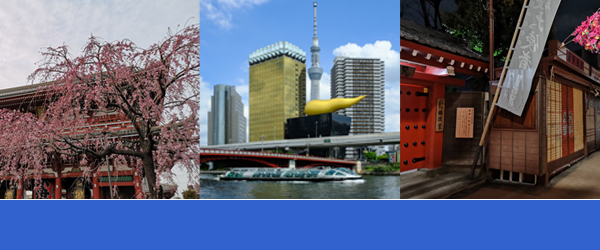Tired of boring layovers? Narita, the city that will charm you beyond its airport. Yes, you read that right, there’s a whole world to discover beyond the runways.
Forget the guidebooks and get ready to:
- Travel back in time with its ancient temples that will leave you speechless.
- Stroll through streets with stories that nobody told you.
- Relax in a zen atmosphere that will make you forget the travel stress faster than a dango in your mouth.
Narita is not just a layover, it’s an adventure. Say goodbye to boring connections and dare to explore it. Your passport (and your Instagram) will thank you
As a less-explored tourist destination, Narita offers an intimate and genuine experience of Japanese culture, unburdened by overwhelming crowds.

Narita is like a living history book, and the Naritasan Shinshoji Temple is its oldest chapter!
Narita’s roots reach deep into ancient Japan, with the Naritasan Shinshoji Temple standing as a testament to the city’s cultural significance. Founded in 940 by the revered monk Kanchō Daisōjō, this Buddhist temple has evolved into one of Japan’s largest, attracting millions of visitors annually. The Sanmon Gate, a towering three-story structure, welcomes visitors, providing panoramic views of the city. Within the temple complex, the Gakudo Hall hosts religious and cultural ceremonies, while the Shaka-do Hall houses a magnificent 10th-century Buddha statue.

Naritasan Shinshoji Temple isn’t just any old temple, it’s like a VIP entrance to ancient Japan! The first stop? The Niomon gate!

The entrance to Naritasan Shinshoji Temple is marked by the Niomon, a majestic gate that stands as a symbol of spiritual significance. This gate, adorned with intricate carvings and guardian deities, serves as a prelude to the spiritual journey within. As visitors pass through the Niomon, they are greeted by a sense of reverence and awe, setting the tone for the sacred atmosphere within the temple grounds.



Omotesando Street (don’t confuse it with Tokyo Omotesando Street, is 180 degrees different), the bustling shopping street leading to the temple, embodies Narita’s traditional charm. Lined with shops and stalls offering souvenirs and traditional crafts, this thoroughfare is a vibrant hub. Narita’s authenticity shines through Omotesando Street, where local specialties like unagi (eel) and soba (buckwheat noodles) tantalize the taste buds. Numerous unagi restaurants along this street make it an ideal spot for savoring this delectable dish.

Narita’s skilled artisans preserve traditional techniques, with local workshops and galleries providing insights into the city’s artistic heritage. Handmade crafts serve as unique souvenirs, reflecting the city’s commitment to its cultural roots.
Adding to the cultural mosaic is the Naritasan Yokan Museum, providing an educational journey into Narita’s history. The museum’s exhibits showcase artifacts and interactive displays, offering a nuanced understanding of the region’s evolution over the centuries.
A noteworthy addition to Narita’s cultural offerings is the Museum of Calligraphy, where visitors can appreciate the artistry and history of Japanese calligraphy. The museum provides a unique perspective on the role of calligraphy in Japanese culture and showcases a diverse collection of works.
The Naritasan Shinshoji Temple holds a fascinating connection to Japanese traditional theater, specifically the world-renowned art of Kabuki. The temple has historical ties to Kabuki, highlighting the interwoven nature of Narita’s cultural contributions to Japan’s performing arts.

In Japan, almost everything has their own mascot (even the police have their own mascot!), Narita is not the exception.
Ever heard of a mascot named after a delicious dish? Unari-kun, with his name fusing “unagi” (eel) and “Narita,” is a walking (or, should we say, flying) advertisement for the city’s famous eel cuisine!

The Naritasan Shinshoji Park, adjacent to the temple, provides a tranquil escape into nature. Its carefully manicured landscapes and serene surroundings offer an ideal setting for relaxation, picnics, and contemplation.
Narita is not merely a transit point but a destination worth savoring. A one-day trip allows visitors to escape the airport rush, while an overnight stay offers a more immersive experience. For those with early morning flights from Narita Airport, spending the night in Narita City provides a convenient and enriching prelude to their journey.
Narita’s culinary scene is a celebration of local flavors. Unagi takes center stage as the city’s most iconic dish, with Omotesando Street housing a plethora of unagi restaurants. Travelers can indulge in the delicate flavors of freshly made soba noodles, experiencing the authentic essence of Narita through its diverse culinary offerings.
Narita’s accessibility from the airport, facilitated by well-connected train and bus services, makes it an attractive option for a day trip or overnight stay. Travelers with early morning flights find Narita City’s proximity to the airport particularly convenient, providing a relaxed and stress-free start to their journey.
In summary, Narita is not just a gateway through Narita International Airport; it’s a city that seamlessly combines modern convenience with historical significance. The Naritasan Shinshoji Temple, with its stunning architecture and serene surroundings, stands out as a cultural gem. Whether exploring the Omotesando shopping street or immersing oneself in the temple’s spiritual atmosphere, Narita offers a unique blend of tradition and accessibility. It’s more than a transit point; it’s a captivating introduction to Japan’s cultural richness and a memorable stop for all travelers.








